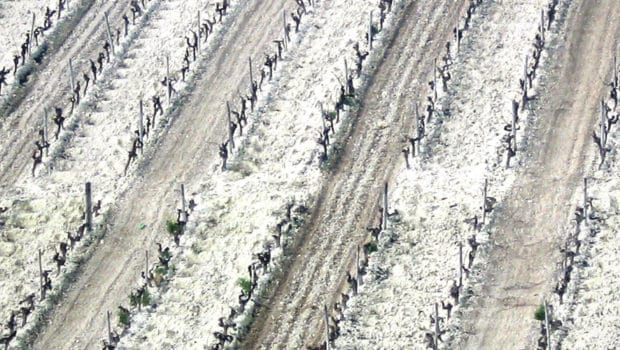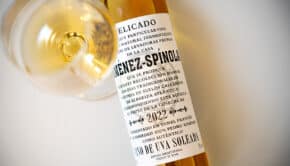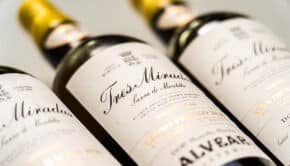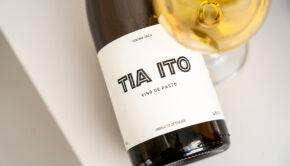Albariza types: Antehojuela, Tosca Cerrada, Barajuelas…
When talking about the terroir of the sherry triangle, usually the information ends by saying that the quintessential soil for sherry (especially biologically aged types) is the white, chalky Albariza. In reality though, Albariza is a bit of an umbrella covering a significant variety of sub-types and producing some very different wines. Also for the other types of soil (barros, arenas) there were different sub-types.
This knowledge isn’t new, in the 19th century all wines were classified by the type of soil into nine different types: three albarizas, three clay soils and three sandy soils. The type of soil was valued more than the age of a wine, with a 10 year-old wine from sandy soil being cheaper than a 1 year-old from albariza.
Yet it’s a surprisingly recent development that winemakers like Ramiro Ibáñez have started digging deeper into this and brought to our attention the wonderful diversity of albariza, working in different vineyards and explaining their effects on the resulting grapes and wines. I’ll come back to Ramiro’s excellent work at the end of the article.
Where does Albariza come from?
Albariza soils are formed by the sedimentation of huge layers of shells of diatomous algae (hollow shells of silicon, from unicellular organisms united in colonies) and radiolaria that populated the Jerez area when it was still covered by the sea (Upper Oligocene). The Betic depression around the current course of the Guadalquivir rivier was an inland sea for millions of years and the organic deposits slowly turned into limestone, chalk and other minerals.
As Andalucía emerged from the sea, the altitude of the vineyard defines the purity of the albariza (especially above 45 metres the quality is noticeably higher).
The mineralogical composition varies depending on the specific location, but it revolves around diatoms, calcites and phyllosilicates. While it is high in chalk, geologists will tell you Albariza is simply too young to be properly called chalk – at the moment it is simply lime-rich. It’s also very low in organic matter, making it a ‘poor soil’ for agriculture but perfect for the creation of wine, especially sherry.
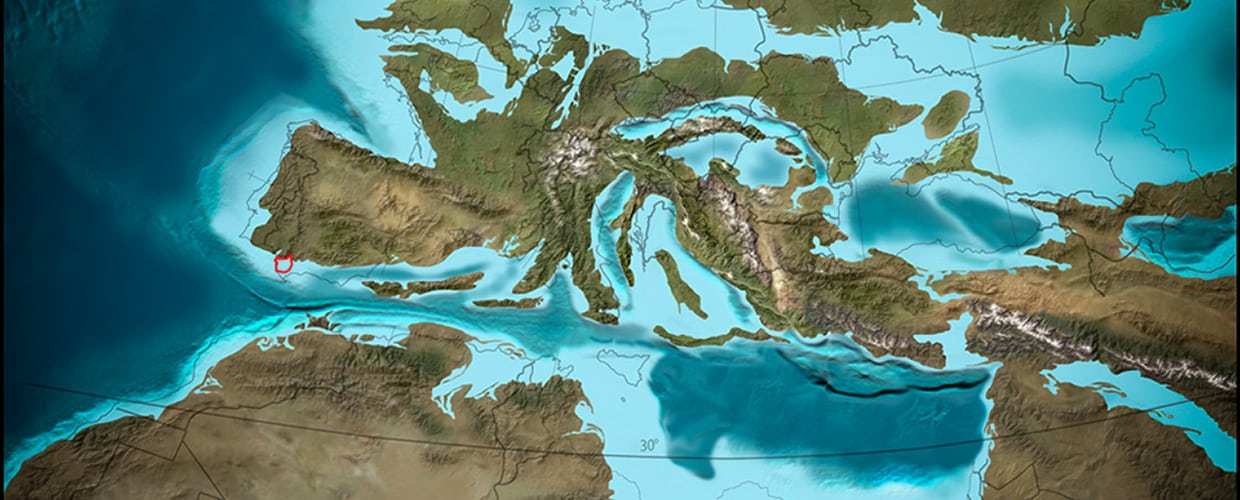
The sherry region during the Oligocene
Albariza exposed
Since the Oligocene the sea gradually retracted causing the albariza layers to be exposed. While the soil has not been greatly eroded, rivers like the Guadalquivir and Guadalete created a series of gently undulating horizons. The hills have low slopes, but still sufficient to expose slightly different types of soils and create a different relation to the sea and the winds.
Roughly speaking a higher elevation will give you a better soil with the purest type of Albariza. The whitest soil is found at the top of the hills and darker soils towards the valleys. Unsurprisingly, some of the highly esteemed pagos like Macharnudo Alto have the highest elevations of the whole Jerez area, up to 135-140 meters above sea level.
Sub-types of Albariza
The current-day classification of the soils around Jerez is mostly the work of García del Barrio, who published La tierra del vino de Jerez in 1972 (reworked 1979).
Antehojuelas / Lentejuelas
The antehojuelas subtype is a rather loose, crumbly and porous type of albariza. It is easy to work and its structure will act as a sponge to store rainwater in winter. It’s soft when wet, but it forms hard lumps when dry. Lentejuelas contains more limestone and a bit more sand and is generally even easier to work. These types of pure albariza typically lead to a very fresh but uncompromising wine, with a sharp finesse and often a relatively high acidity. Direct, vertical wines, if you like, and classic Finos / Manzanillas.
Found primarily in coastal areas, for instance in the pago Miraflores Baja or El Carrascal near Sanlúcar (see my map of pagos in the sherry region). It is also found in La Atalaya, a region located further away from the ocean and with a higher altitude.

Antehojuela – Barajuela – Tosca Cerrada – Pictures taken in Ramiro’s office by Andrew of Undertheflor
Tosca Cerrada / Tosca Basta
Tosca Cerrada is a very tough type of albariza with a slightly more grey tint, lower chalk levels (50-60%) than the purer Antehojuelas and a cement-like solidity (hence cerrada or closed). When wet it becomes soft and appears to melt. It occupies a large portion of the Jerez area, up to 80% of the current vineyards are on Tosca Cerrada. Found in the pago Miraflores Alta, Pastrana and Callejuela and associated with a few highly appreciated wines like Barbiana and Manzanilla Pastrana.
This type of albariza still leads to a fine, velvety wine, with a bit more structure than Antehojuelas and more elegance. It commonly expresses more floral notes and will result in fairly rounded wines, somewhere in the middle of Antehojuelas and Barajuelas.
Tosca de Barajuelas
Barajuelas contains the highest amount of diatoms and around 60-70% of limestone. It shows clear horizontal layering of white lines (chalk), sometimes mixed with layers of ochre (containing hydrated iron oxide and clay). The laminated structure makes it necessary for the roots of the vines to work harder if they want to grow. This results in lower production and grapes with a thicker skin. The resulting mosto will be more muscular, more powerful, often more concentrated, earthy and serious. Horizontal, persistent wines, if you like, often with a high sapidity.
Found in Macharnudo and Añina or around Mahina and Carrascal in Sanlúcar. See Fino La Barajuela for instance.
Apart from these noble types of albariza, there are other types of slightly lesser quality:
Albariza Parda
More impurities and sand, which leads to more fruitiness and weight but less minerality, depth and elegance. If the soil is less expressive, the grape gets to talk louder, which in the case of Palomino Fino often leads to a nice nose but less body on the palate. Albariza Parda is found in the pagos Cuadrillos, around Rota and in the Finca Matalián (Chiclana) for example.
Albariza Tajón
Albariza Tajón or Albariza Tejón is the hardest, most compact soil which has the highest proportion of active limestone, up to 80%. Very white and almost like a rock, it is generally found at greater depths. The limestone isn’t broken or worked easily so there are few vineyards on these soils. In general they are considered less satisfactory as well.
Lustrillo
Lustrillo is another type of impure Albariza, younger (from the Pliocene), with a cinnamon tint at its surface due to iron oxide. Mostly found around Trebujena, along the road to Sevilla, as well as in tiny parcels around Sanlúcar (especially in Miraflores) where it is usually called Polvillejo and has a rose hue.
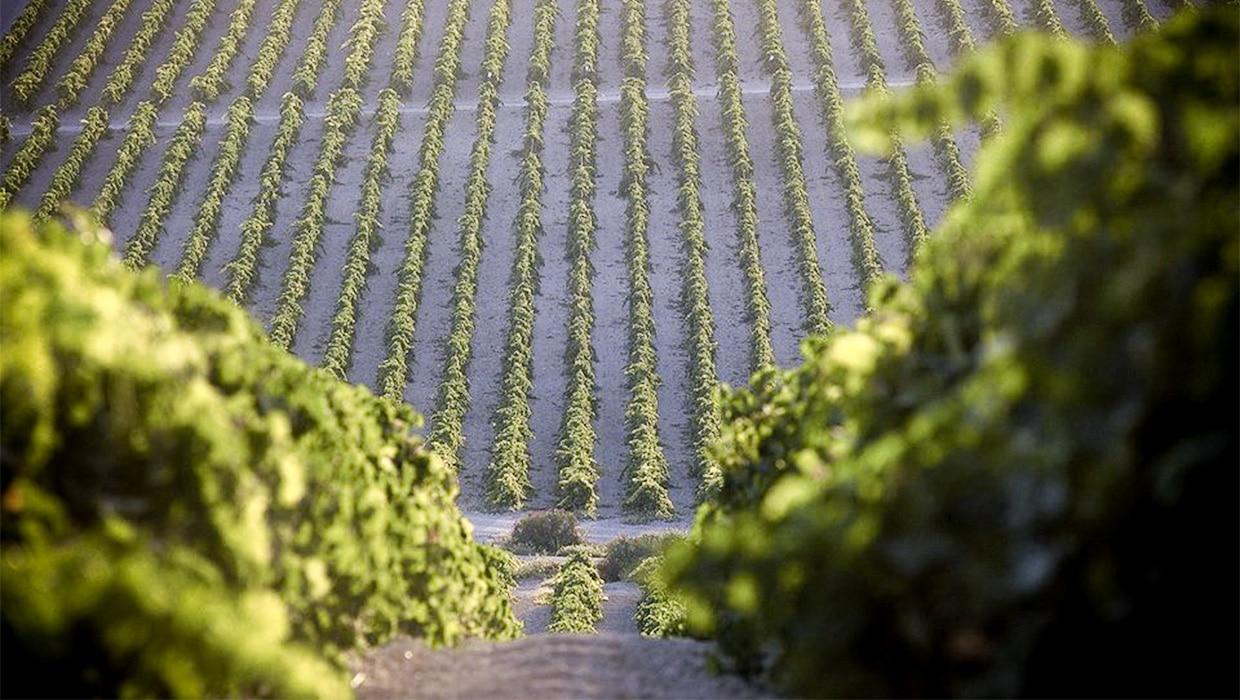
Mind that the type of soil also has an indirect influence on the flor. Grapes that are grown on a soft, more porous soil will generally have a thinner skin. This means indigenous yeast will not easily settle on the grape. Grapes from more compact, tough soils will generally have thicker skins and more yeast cells on them.
Also, you can draw parallels between the type of soil and the type of yeast that is seen in the solera. Softer soils seem to impart the more common, gentler beticus yeast strain whereas wines from compact soils have a higher chance of developing montuliensis. Just look at the soleras of the Manzanilla Solear or Manzanilla Gabriela for instance. Both have a big influence of montuliensis and both wines are made with grapes from high quality pagos with compact soils (Santa Lucía and Gibalbín in the case of Barbadillo, Balbaína in the case of Gabriela).
Consequently, it may not come as a surprise that different pagos gained a certain fame for different kinds of sherry. Balbaína or Añina are especially noted for Fino, Macharnudo is known for Finos that develop nicely into Amontillados, while Carrascal provides great Olorosos. It’s all a matter of microclimate and differences in the albariza soil.
The diversity of terroir in Jerez
What can we learn from this? First of all, that it is quite a complex story. The specific location of the vineyard indicates the soil, its orientation affects the exposure to sea winds. The composition of the soil in turn influences the vine and the grapes, which in turns influences a whole series of winemaking decisions, the ability to create certain profiles of sherry, the development of the yeasts, etc. I’ve given some rough guidelines as to which wine to expect from a certain sub-type of albariza, but take this with a pinch of salt: a wine is a product of so many different influences.
It goes to show that there is an impressively high diversity within the general characteristics of Albariza. In the 20th century there has been a tendency to mix grapes from different vineyards in order to create standardized profiles. Even the development of the solera system was aimed at wiping out some of the individual profiles in favour of consistency over the years. This way of thinking is now slowly changing in the sherry triangle, in parallel with a regained interest in vintage sherry and terroir as a whole.
I’m still learning about the influence of all these different elements that make up terroir… some interesting years are ahead of us as more treaceable single-vineyard wines are being made.
Pitijopos (Cota 45)
I should definitely mention Pitijopos again, a project by Ramiro Ibáñez of Bodegas Cota 45, set up to give us a unique insight in the typical terroir(s) of Jerez. Volume 1 was launched in 2015 and was a series of six wines, six mostos – unfortified base wines for making sherry. What Ramiro did was apply the same winemaking methods to the Palomino juice sourced from six different vineyards, each with their own characteristics in terms of soil, location and orientation. They were only sold as one mixed case, meant to be drunk in one comparative, educational session.


